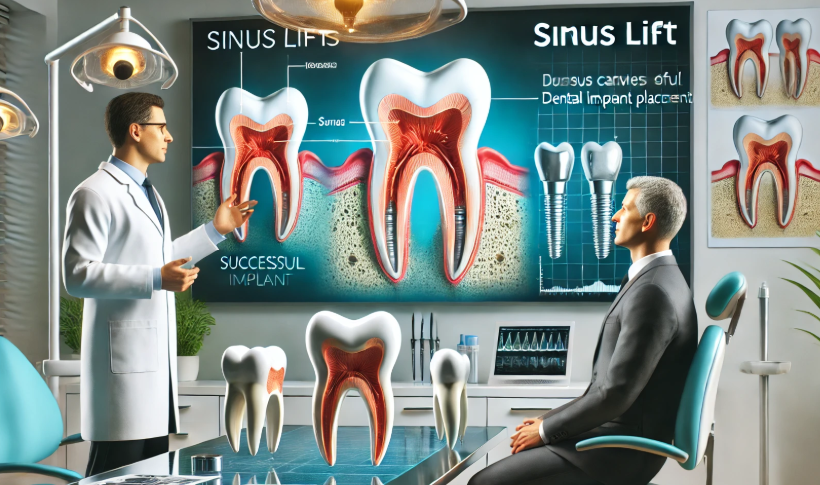Dental implants have become a popular solution for replacing missing teeth, offering a natural look and improved functionality. Achieving success with dental implants often requires optimal bone density and volume in the jaw to provide a sturdy foundation. For individuals with inadequate bone in the upper back jaw, a procedure called a sinus lift may be used to aid in implant placement.
What is a Sinus Lift?
A sinus lift is a surgical procedure performed to increase the amount of bone in the upper jaw by elevating the sinus membrane and placing a bone graft. The sinus cavity is located above the upper back teeth. In cases where the bone height is insufficient for implant placement, additional bone material is introduced. This treatment is often necessary because of the anatomy of the upper jaw. By augmenting the bone, a sinus lift enhances the long-term success of the implant. It does so by reducing the risk of complications such as implant failure due to insufficient support.
Who Are They For?
Sinus lifts are typically recommended for individuals who lack adequate bone density or volume in the upper back jaw. This is where the structure of the sinus cavity limits natural bone availability. Following tooth loss, the jawbone tends to shrink in height and volume. This can be especially pronounced in patients who have been missing teeth for an extended time. Some individuals naturally have less bone in the upper jaw or a larger sinus cavity. This can make standard implant placement a challenge.
What Does the Procedure Entail?
The sinus lift procedure is conducted in a step-by-step process and is typically performed by an oral or maxillofacial surgeon. Before the procedure, the dental professional will evaluate the patient’s oral health and may discuss their medical history. This stage can also involve determining the source of bone graft material, which may be from the patient themselves, a donor, or synthetic options.
Sinus Membrane Elevation: The procedure begins with a small incision in the gum tissue to expose the bone. A small window is then created in the bone near the sinus cavity. The surgeon carefully lifts the sinus membrane, creating space between the membrane and the upper jawbone.
Bone Grafting: Once the sinus membrane is elevated, the bone graft material is placed into the space created.
Healing Period: After the graft is placed, the surgical site is sealed, and the healing period begins. It might takes several months for the bone graft to integrate with the existing jawbone and create a stable foundation for dental implants.
Implant Placement: Once the bone has sufficiently healed and integrated, the dental implants can be placed.
Speaking to a Dental Professional
A sinus lift can play a significant role in the success of dental implant placement for individuals with reduced bone density in the upper jaw. This procedure creates the conditions for long-lasting, stable, and functional dental implants. If you are exploring your options for dental implants and are unsure whether this procedure might be part of your treatment plan, consult a dental professional. They can provide a tailored evaluation and guide you through the best course of action.
- How Bail Bondsmen Help Families Navigate the Legal System
- Maximizing Productivity in Your Office Space Through Thoughtful Design
- The Benefits of Working With an Attorney for Your Car Accident
- How to Choose the Right Lighting for Kitchen Remodeling
- Lifestyle And Cost Of Living Insights for Retiring In Panama
